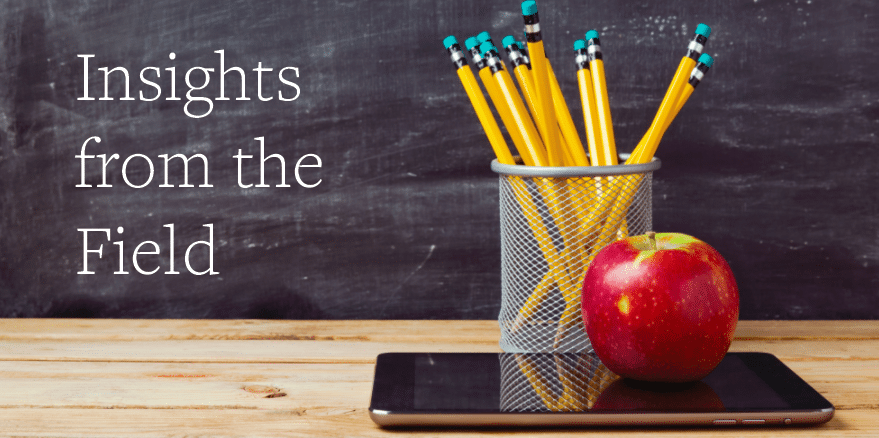
One of the most powerful potential benefits of blended learning is how it can help teachers create an achievement-oriented culture in their classrooms. In many of the best examples of blended learning, the real magic of the model comes not from the technology alone, but from the ways the technology transforms how teachers engage with and motivate their students.
In this post, I share an excerpt from a recent blended-learning teacher interview with Brandon Johnson, a 4th- and 5th-grade math and science teacher at Browne Education Campus, a public elementary school in the District of Columbia Public Schools (DCPS). Brandon explains how blended learning has helped him teach his students to be self-directed learners who are enthusiastic about learning and take ownership of their work. He also shares thoughts on how blended learning has changed his approaches to classroom management.
Thomas: How has blended learning changed your classroom and your relationships with your students?
Brandon: I think I have more of a shared trust with my students now than I did before. The school [where] I work is considered a “bottom 40” school in DCPS, which means that it usually comes with increased behavioral issues, a lot of social-emotional problems, and a lot of mistrust. So in those schools, there’s a lot of focus on getting high-quality results, which means that as a teacher, there’s a lot of pressure to take control of everything. I spent the first three years of my career doing that, and I was exhausted.
Prior to implementing blended [learning], I had to lead, plan, and organize instruction, so [students] didn’t really have a say in what I was doing. Before, I was on more of a whole-class model where … I would have to track to make sure that all the students were getting it. … They had no choice in it. … They had to learn it that way because it was the only way I was going to teach it. But now, with the various edtech programs, I’m giving them opportunities to see and practice the same content in different ways. Now they go at their own pace.
Blended learning gives my students the opportunity to express voice and choice, which I think is critical. What we’re creating are independent thinkers. That’s really what I enjoy the most—that students have started to take more accountability for their learning, even to the point where they’re tracking their own data. Now the only part [where] I’m dictating what they’re going to do is when they come to my station, which is only for 30 minutes a day, whereas before I was planning the whole two-hour learning experience. It’s definitely been a transition in my practice. … But I had to practice giving them opportunities first by asking for their feedback. As they started to see that I really cared and that I was willing to make changes, they became more open to the process and more invested. They have that voice now—they’re really empowered to try and take on these responsibilities and make all they can of their learning.
Thomas: How has blended learning affected classroom management?
Brandon: [Blended learning allows a] more “hands off” approach to classroom management. I think that when you give students the right opportunities, they can function. What I’m really teaching is how to go out and make decisions. I’m giving parameters in terms of how much content to get through, but they make the decision about how they get through it. And when they reach a goal, they say, “Wow, I did it!” They feel like they have a voice, have power. Because of that, there isn’t a need to manage their every action, just give feedback. If you think about it, that’s kind of how we function in the adult world: [we] have managers come in and give feedback to help us grow. So blended learning has helped my students become more autonomous, and I don’t have to manage as much as I used to.
Blended learning has really shown me how to have trust in my students. [I now ask myself], “How do I share the responsibility and the learning that’s going to happen in this classroom?” I just help to create an environment that’s going to empower them to want to be more independent learners.


